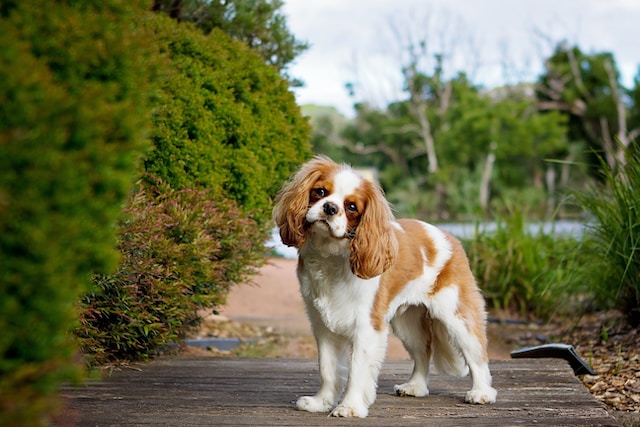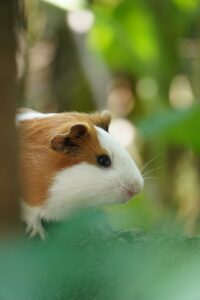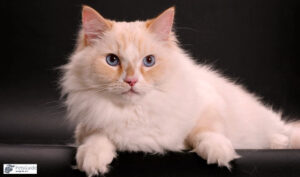
The History and Origins of the Cavalier King Charles Spaniel
Contents
- 1 Introduction
- 2 The breed was created in the early 18th century by King Charles II.
- 3 The Cavalier King Charles Spaniel was named after King Charles II and his son, the Duke of Cambridge.
- 4 In the 1800s, a pair of designer dogs were bred with the goal of making them smaller than what they had been historically.
- 5 Despite its name, the Cavalier has no connection to royalty or nobility.
- 6 The Cavalier King Charles Spaniel is small but powerful dog that loves to be around people.
- 7 The Cavalier King Charles Spaniel is one of the most popular toy breeds in the world today, second only to its related cousin, the Pekingese.
- 8 The history and origins of this beautiful dog are fascinating!
- 9 Conclusion
Introduction
The Cavalier King Charles Spaniel is one of the most popular toy breeds in the world today, second only to its related cousin, the Pekingese. These adorable little dogs are small but powerful and love to be around people. Their name may conjure images of royalty and nobility, but this breed’s origins are anything but regal. In fact, their history is more about breeding for size than breeding for bloodlines! Read on to learn more about this enchanting dog and its fascinating roots:
The breed was created in the early 18th century by King Charles II.
The breed was named after him because he had a particular love for dogs, and this particular breed was one of his favorites. He had a Cavalier King Charles Spaniel named Mopsy who was given to him by the Earl of Marlborough as thanks for allowing him to marry his daughter (who later became Queen Anne).
Mopsey’s name was common among Cavaliers until around 1900 when it began being used less frequently in favor of other monikers such as Prince Charlie or Prince Charles.
The Cavalier King Charles Spaniel was named after King Charles II and his son, the Duke of Cambridge.
The Cavalier King Charles Spaniel was named after King Charles II and his son, the Duke of Cambridge. The breed was created in the early 18th century by King Charles II.
The history of this breed is not too well documented, but it is believed that they originated from crosses between small spaniels from Spain and England with some toy breeds like Italian Greyhounds or Chinese Crested dogs.
In the 1800s, a pair of designer dogs were bred with the goal of making them smaller than what they had been historically.
The Italian Greyhound was bred with the Shih Tzu, which was then mixed with Pekingese and Pug to create what we now know as the Cavalier King Charles Spaniel.
The breed’s history is rooted in its purpose: it was meant to be a lap dog and not used for hunting or guarding purposes.
Despite its name, the Cavalier has no connection to royalty or nobility.
The name is a reference to the dog’s personality and temperament. The Cavalier King Charles Spaniel is a popular companion dog that originated in England during the 1800s. It has no connection to royalty or nobility, despite its name.
The breed was developed by selective breeding from several varieties of toy spaniels, including the English Toy Spaniel (also known as ‘Prince Charles’), Blenheim Spaniel and English Cocker Spaniel. The objective was to create a smaller version of these larger breeds with similar features such as long ears, curly tails and short muzzle lengths–all characteristics that make them look like lapdogs!
The first written record of this breed dates back to 1650 when it appeared in paintings owned by King Charles II himself!
The Cavalier King Charles Spaniel is small but powerful dog that loves to be around people.
They are playful and active, loyal and affectionate, smart and easy to train, with a sweet temperament.
The Cavalier King Charles Spaniel was originally bred as a companion dog for nobility in Britain in the 17th century. They were named after King Charles II who owned them at that time because they were associated with royalty. Today’s CKCSs can still be traced back to those original dogs; their lineage has been carefully preserved through careful breeding practices over many generations by dedicated breeders worldwide!
The breed was first developed in England during the 17th century and has been associated with royalty ever since.
The breed’s history begins with King Charles II who liked small dogs that could fit into his coat pockets when traveling–a characteristic he shared with his father, Charles I (who was known for having a small spaniel named Mitte). The dogs were also known as “pocket spaniels” because they could be kept close at hand while still being able to hunt game birds like pheasant or partridge without being seen by their prey until it was too late!
The history and origins of this beautiful dog are fascinating!
The breed was created in the early 18th century by King Charles II. He wanted a smaller version of his favorite hunting dogs, which were known as spaniels (a group that includes Spaniels and Cocker Spaniels). So he bred some toy spaniels with one of his favorite lap-dogs–the Pembroke Welsh Corgi–to create a new type of dog that would be small enough for him to carry around with him everywhere he went.
The resulting puppies were so adorable that they quickly became popular among members of royalty across Europe; eventually they were given names like “King Charles” or “Duke Cambridge” after their royal owners!
Conclusion
The Cavalier King Charles Spaniel is a wonderful dog that has been loved for centuries. It’s important to know the history and origins of this breed so that you can better understand how it came about. The Cavalier was created in the early 18th century by King Charles II and named after him as well as his son, the Duke of Cambridge. In fact, there is no connection between this breed and royalty or nobility despite its name! Today, this loving companion remains one of the most popular toy breeds in the world thanks to its sweet personality and small size.



Average Rating